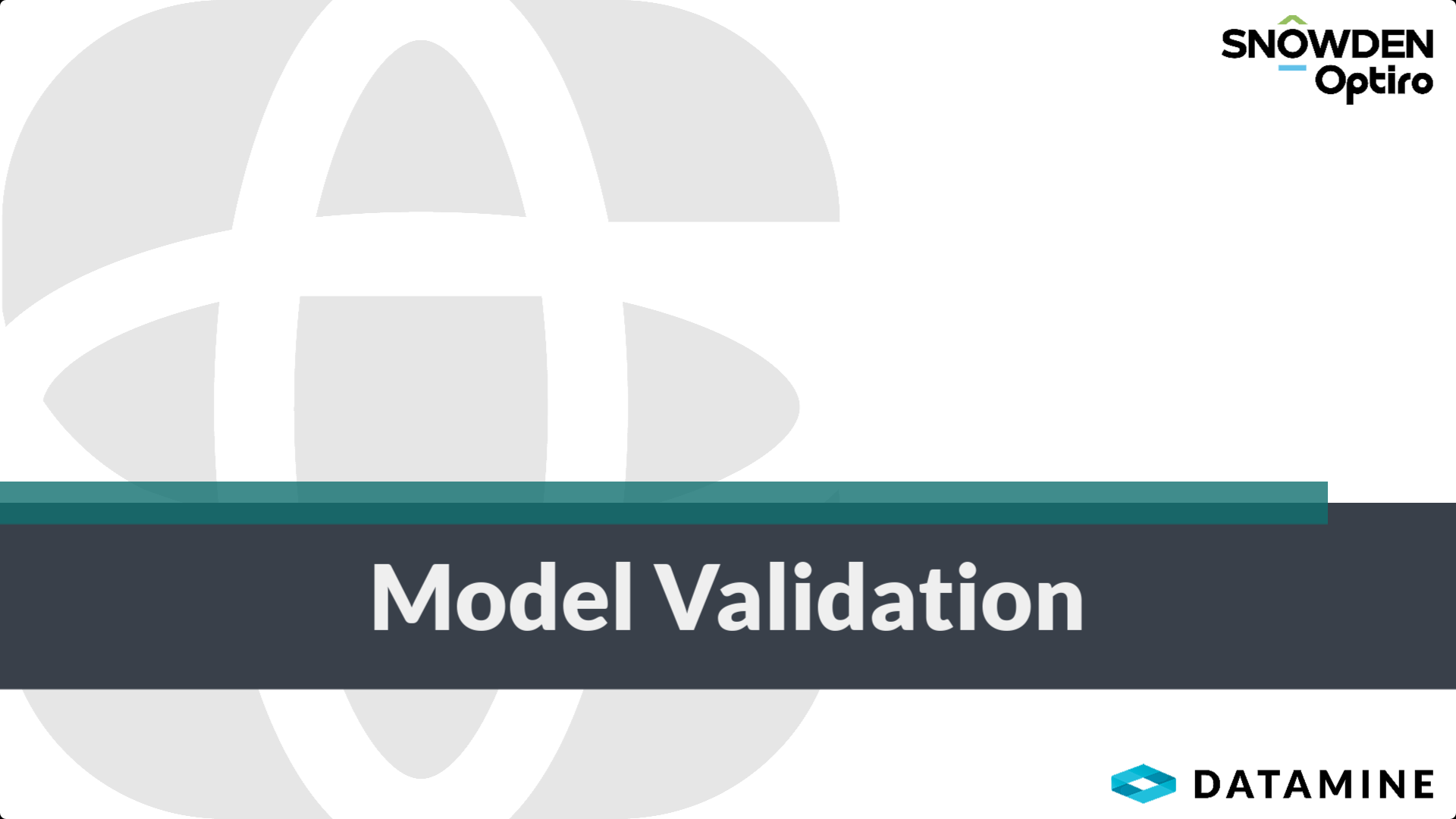Model Validation
The validity of grade estimates is subject to every decision made and parameter used throughout the resource estimation process. There are multiple points at which things can go wrong and so it is essential to validate the final model to ensure that the estimated grades reflect the input information. See how to Validate Grade Estimates.
Standard validation checks that can be carried out in Supervisor include:
- Trend Plots – Model Validation – Are used to validate the estimated grade by comparing the mean of the estimate grade to the mean of the point data within a series of slices. The slices can be oriented in the X (Northing), Y (Easting) or Z (Elevation) directions.
- Validation Histograms – Plot the frequency of different assay values in the underlying dataset(s).
- Validation Probability Plots – Used to observe the distribution of points in the data set (sample data or block model), and can be displayed in four different ways: Cumulative Distribution, Log Cumulative Distribution, Probability and Log Probability. The type of plot is determined by the axis scaling selected.
- Validation QQ Plots – Used to compare block model estimates with naive and declustered data to determine their similarity. A straight line indicates identical distributions.
- Validation Grade Tonnage Curve – Calculates a grade tonnage curve that can only be inserted below a Model Validation component (and is automatically inserted whenever a new Model Validation component is created).
- Statistical Comparison Tables – Shows the summary statistics for the sample data and up to three (3) configured block estimates, as well as the percentage difference between each block estimate and the sample data.


